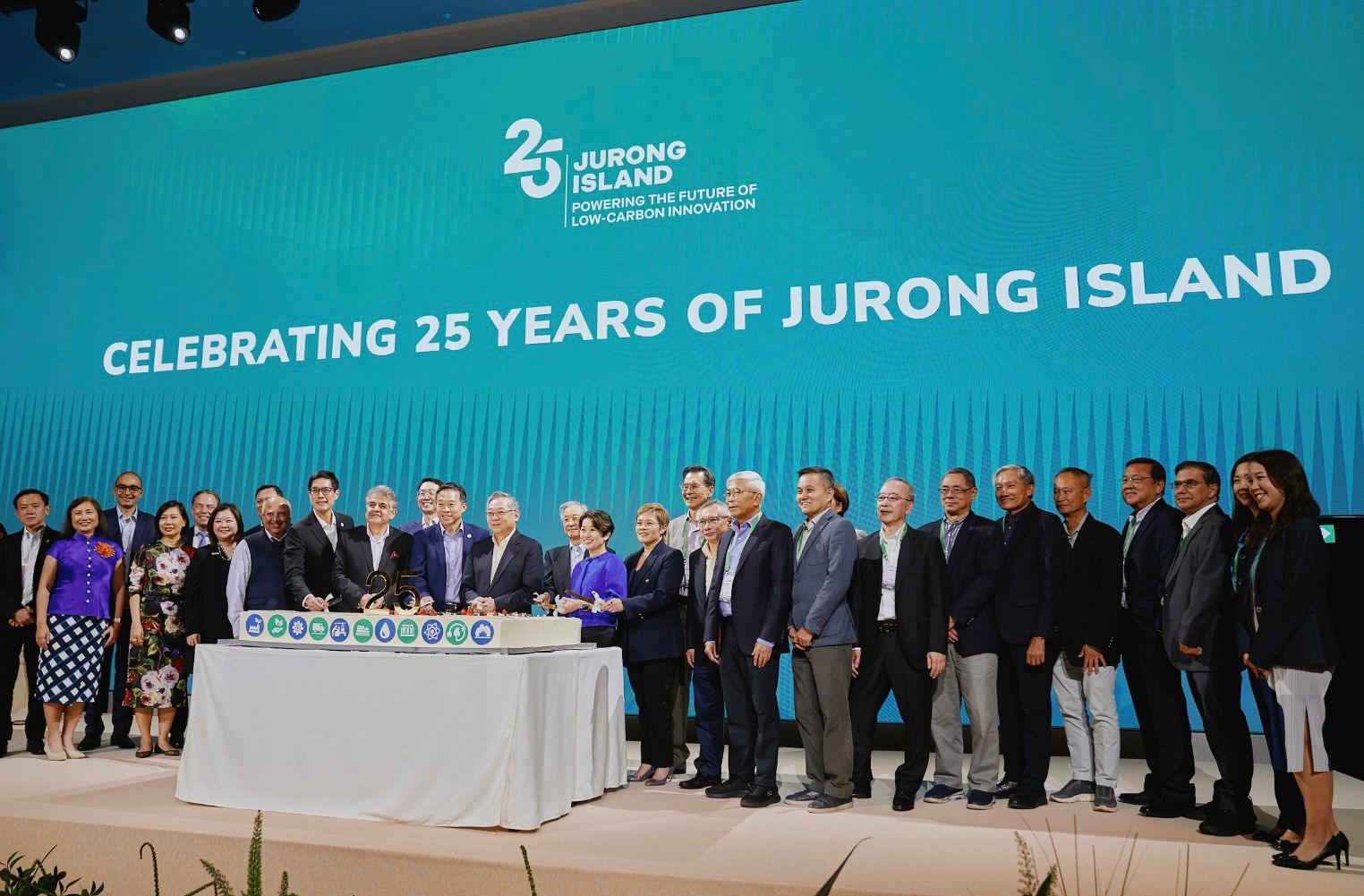The 8.9-hectare pond is a nature-based solution that can hold and release up to 50 Olympic-size pools’ volume of rainwater, without the need for man-made drainage systems.
JTC, in collaboration with the National Parks Board and national water agency PUB, has built a retention pond at Jurong Island’s western Meranti area that can hold up to 125,000 cubic metres of rainwater, equivalent to 50 Olympic-sized swimming pools. This nature-based solution is designed to enhance the island’s flood resilience against future projections of more intense and frequent storms due to climate change.
The 8.9-hectare pond is built above an underground body of water-retention permeable sand, known as an aquifer. During an extreme storm event, rainwater channelled into the pond will reduce the possibility of flooding in the surrounding areas. The rainwater will seep through the pond’s porous base over time into the aquifer, which eventually discharges into the surrounding sea. This allows the pond to hold rainwater again. The entire process of retaining and releasing rainwater takes place naturally without pipes, pumps, and mechanical drainage systems.
As the master planner and developer of Singapore’s industrial landscape, JTC works with partner agencies to prepare and plan ahead to protect Jurong Island from climate change over the next 50 to 100 years.
In 2020, JTC engineers embarked on a study to find innovative and sustainable adaptations to the drainage system on Jurong Island so it can better cope with episodes of intense rainfall. The team tapped on the discovery of an aquifer on Jurong Island that had formed naturally over time as rainwater is accumulated within the reclaimed sand layers. Through detailed hydraulic simulations, JTC engineers found that they could build a retention pond above the aquifer to hold and release rainwater naturally to prevent flooding without massive upgrades to Jurong Island’s drainage infrastructure.
Further detailed modelling and simulations were carried out to ensure the optimal size and location of the pond. Construction of the pond took one year and was completed in March 2022.
JTC’s Chief Sustainability Officer Mr Tan Chee Kiat said, “The pond represents a first of its kind nature-based solution that uses Jurong Island’s unique sandy terrain to strengthen our climate change resilience. With this pond, we are able to channel and release rainwater naturally without any pipes, pumps, and mechanical drainage systems. This supports our vision to transform Jurong Island as a sustainable energy and chemicals park as part of the Singapore Green Plan 2030.”
Renowned urban planner and landscape architect Professor Herbert Dreiseitl, who had previously worked on conceptualising and naturalising the drainage channel at Bishan-Ang Mo Kio Park, was engaged as a consultant in the initial stages of the design of the pond. Professor Herbert Dreiseitl said, “The vastness of ever-changing productive systems opens a plethora of fresh new ideas for Regenerative Resilient Industrial Landscapes. Based on more circularity and nature-based solutions, Urban-Industrial Landscapes combines a better understanding and treatment for the rich dynamics and structures of water.”
-- End ---

